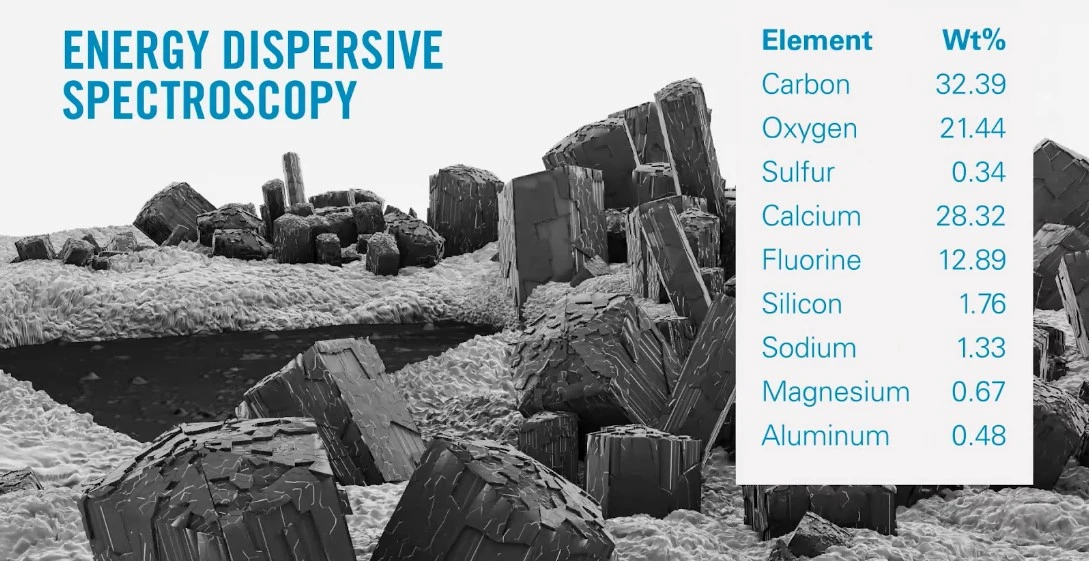Avista™ | Membrane Autopsy with CEI
Persistent fouling of reverse osmosis (RO) membranes can lead to increased differential pressures, reduced permeability and salt rejection, and costly downtime, disrupting operations. Avista addresses these challenges with advanced membrane autopsies utilizing cutting-edge Avista Chromatic Elemental Imaging℠ (CEI℠), site audits, and pilot studies to identify and resolve fouling causes. This approach enhances system performance and extends membrane lifespan.
How Membrane Autopsy Works
The Avista™ Membrane Autopsy is one of the most powerful tools available to identify, prevent and correct membrane performance issues to improve RO and MF/UF system performance and operation.

It includes a physical dissection of a membrane module to remove samples and supporting materials for comprehensive laboratory and foulant analysis. This analytical lab procedure identifies scaling or fouling problems, determines the appropriate cleaning regimen, and verifies the presence of chemical and physical damage.
On-site, technical experts utilize visual and quantitative data from the autopsy to evaluate system operating conditions and propose precise recommendations to optimize system performance.
Membrane Foulant Identification Using CEI℠
CEI is a technology used to identify the location and relative concentration of elements in a foulant sample.
The process involves accelerating a beam of focused electrons across the surface area of a foulant sample, causing each element to emit electrons. The emitted X-ray patterns are specific to each element, enabling individual identification. CEI then assigns a unique color to each element and produces a two-dimensional, high-resolution image of the foulant sample, with element concentration indicated by color intensity.
While CEI provides critical insights into the nature of site-specific membrane fouling issues, confirming the primary sources and implementing effective solutions requires on-site evaluations by technical field experts.
Comprehensive Fouling Inspection with SEM & EDS Analysis

CEI utilizes SEM (Scanning Electron Microscopy) principles with advanced elemental mapping to reveal the intricate interactions among inorganic, organic, metal oxide, and colloidal compounds.
Unlike traditional SEM, CEI and Energy Dispersive Spectroscopy (EDS) enhance insight into the layering characteristics of foulants deposited on a membrane surface by mapping elements directly on the images.
Understanding the fouling sequence mitigates the root causes of membrane fouling. This approach allows for a thorough analysis of the fouling layer and the development of targeted cleaning strategies.
Unique Advantages of Avista Membrane Autopsy with CEI
- Troubleshooting: CEI is unmatched in its ability to accurately identify the primary membrane foulants, aiding in the detection of process deficiencies and preventing future fouling.
- Product Innovation: CEI accelerates the development of new antiscalants, cleaners, and biocides by providing scientific validation of formulations that target specific foulants, replacing traditional trial-and-error methods.
Other Advanced Diagnostic Tools
Beyond CEI, you can also use other advanced diagnostic tools that offer deeper insights into the chemical composition and structural characteristics of fouled membranes, enabling more precise identification and remediation of fouling issues.
- Fourier Transform Infrared Spectroscopy (FTIR): In addition to CEI, techniques like FTIR provide further insight into the chemical composition of membrane foulants, enhancing the diagnostic process.
- X-Ray Diffraction (XRD): XRD is used to analyze the crystalline structure of inorganic elements in fouled membrane samples for a deeper understanding of the fouling process.
- Dye Testing: This standard procedure helps visualize the damage across the membrane to identify the dominant types of damage.
Case Study: Resolving Severe Scaling in a Second-Stage RO System with CEI Technology
The following case study demonstrates how using the Avista Membrane Autopsy with CEI effectively resolved severe fouling issues in a reverse osmosis (RO) membrane system.
SITUATION
After only six months of operation, a fouled RO membrane element was submitted for an Avista Membrane Autopsy to determine the cause of a rapid pressure increase in a second-stage RO system. The tail element weighed almost 50 pounds (22 kgs) more than a new element, indicating severe scaling.
SOLUTION
The Avista Membrane Autopsy revealed the presence of crystals on the membrane surface. CEI identified these crystals as calcium carbonate scale layered on top of silica deposits.
In addition, a review of the original feedwater analysis showed that both calcium carbonate and silica were within the inhibition capabilities of the on-line antiscalant. However, a new feedwater analysis revealed that silica values had doubled over the summer, exceeding the scale inhibitor’s capabilities and resulting in extreme scaling.
RESULT
Based on the membrane autopsy and CEI analysis findings, Avista recommended adjusting the antiscalant formulation and dosing strategy to address the increased silica levels.
Implementing these recommendations restored the RO system’s performance, reducing pressure drops and improving water flow rates.
Contact Avista for Expert Membrane Analysis
The Avista Membrane Autopsy with CEI is an essential service for maintaining and improving the performance of reverse osmosis membranes. By providing detailed insights into membrane fouling and enabling the development of effective cleaning and prevention strategies, this service helps ensure the longevity and efficiency of membrane systems.
For more information on how Avista can provide customized solutions for your water filtration and membrane performance issues, contact us today. Our expert team is ready to assist with comprehensive membrane autopsies, advanced diagnostic tools, and targeted cleaning solutions to keep your water filtration systems running smoothly.



